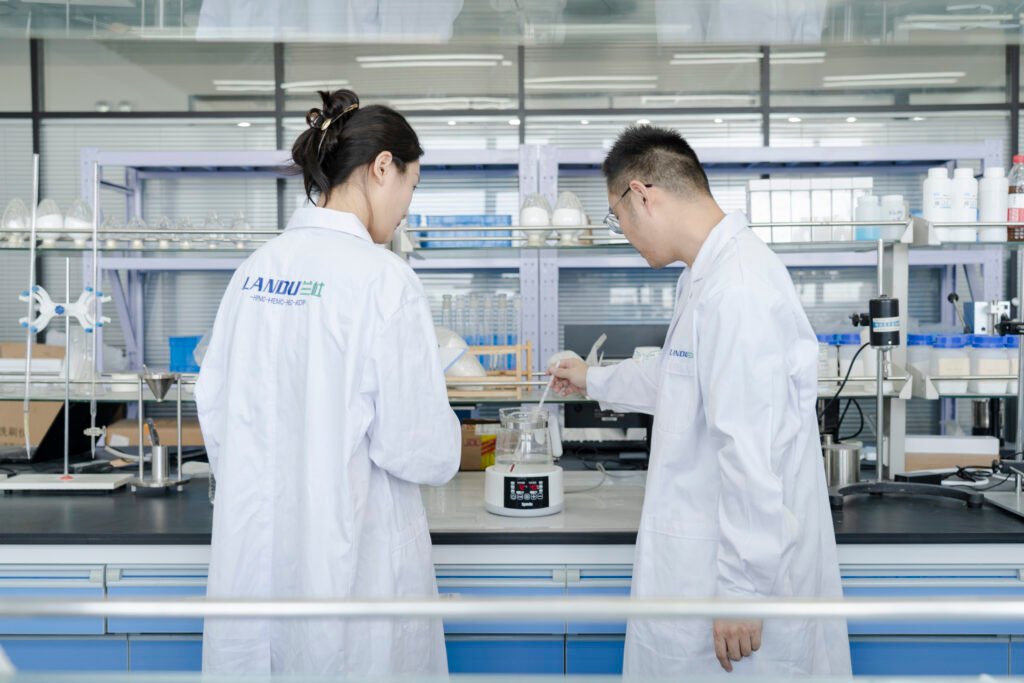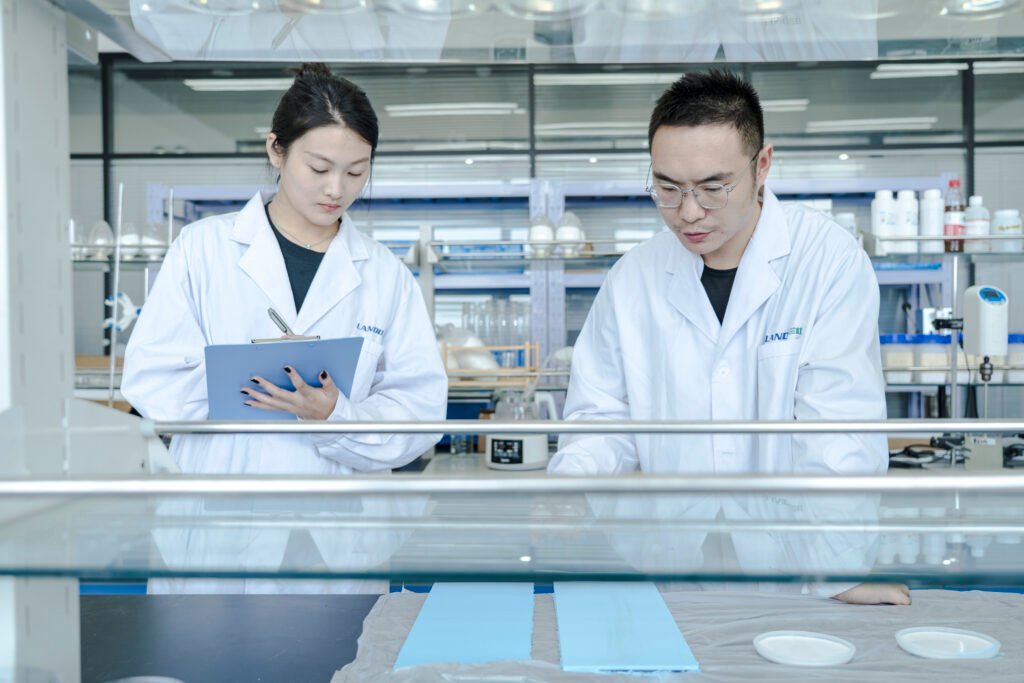how to prolong tile adhesive open time
Optimizing the formulation system
Adjusting cement amount, sand gradation, and filler type can significantly improve the performance and open time of tile adhesive.
Tile adhesive formulation normally is consisted of five main components:
- Inorganic binders: Such as ordinary Portland cement. It could enhance adhesive bonding strength to the substrate.
- Redispersible polymer powder: It could increase tile adhesive strength to all types of substrates, especially suitable for non-porous substrates, large-format tiles, and smooth or unstable surfaces. RDP also reduces the elastic modulus, improves workability, and reduces water permeability.
- Fillers: Graded sand and calcium carbonate are used as filling material, adjusting adhesive consistency. Fillers’ particle size plays a crucial role in performance.
- Water Retention Agent: cellulose ether (HPMC, HEMC) is the main water retention and thickening agent in tile adhesive. It helps retain water in adhesive and ensures good workability. At the thin-layer construction site, because of the thin mortar, its water easily evaporates before the cement hydration or is absorbed by substrates and tiles. With Methylcellulose, this dilemma can be improved.
- Other functional additives: Depending on the requirement of mortar performance, additional functional additives can be used to enhance certain characteristics, and further optimize product formulation.
Appropriate Viscosity of Cellulose Ethers (HPMC, HEMC)
Cellulose ethers are core components of tile adhesive water retention and thickening. Within a certain range of addition, the higher the viscosity of cellulose ether, the stronger its water retention capability.
Cellulose ethers form a three-dimensional molecular network to lock moisture within the tile adhesive, preventing rapid evaporation and absorption by substrate or tiles. This water-retention effect not only extends the open time and workable time of the tile adhesive but also provides sufficient conditions for the continuous hydration of cement. As the hydration reaction progresses, the cement hardening degree increases, thereby enhancing adhesive strength to the substrate.
Additionally, cellulose ethers’ water retention ability helps prevent moisture loss in thin-layer applications. This avoided difficulties in construction and inadequate bonding strength caused by rapid water loss. It is essential in high-temperature, low-humidity, and absorbent substrate conditions.


Appropriate Addition of Cellulose Ethers (HPMC, HEMC)
As cellulose ether addition increases, tile adhesive water retention rate also rises. When cellulose ether addition exceeds 0.4%, the improvement in water retention begins to plateau, reaching a balanced state. After reaching it, further increases in cellulose ether quantity will not significantly enhance water retention, but they will ensure the tile adhesive maintains stable moisture retention under various construction conditions.
Ensure Cellulose Ether Quality Stability
Key indicators of cellulose ethers include viscosity, substitution degree, water retention, etc. Choosing a stable, high-quality cellulose ethers supplier is crucial for ensuring the consistent performance of your tile adhesive.
Reputable suppliers can provide cellulose ether products under strict quality control. They make sure the production meets industry standards. Also, due to their professionalism in cellulose ether manufacture, they could offer your products reliable technical support. No matter formulation adjustment, product selection, or product application, high-quality supplier factories all could help.
Meanwhile, a stable supply chain ensures the timely delivery of materials and reduces uncertainty during production.
Control Water Addition
Proper water addition maintains appropriate tile adhesiveviscosity, thereby extends open time and improves
On construction site, workers have to flexibly adjust water amounts according to environmental conditions (such as temperature and humidity) and the substrate’s absorbency. Excessive water can weaken the adhesive strength, while insufficient water can lead to operating difficulties and inadequate viscosity. Thus, mastering proper water addition techniques is vital for ensuring the optimal performance of tile adhesives.
To conclude
During the tile adhesive construction process, open time length significantly impacts overall quality and effectiveness. By optimizing formulation systems, carefully controlling cellulose ether addition, selecting suitable viscosity cellulose ethers, ensuring stable quality, and flexibly adjusting water amounts, workers can effectively extend tile adhesives’ open time, enhancing convenience and bonding strength. These measures not only improve construction efficiency but also ensure the durability and reliability of the final bonding effect. As the construction industry continuously demands higher material performance, understanding and applying these techniques will provide a solid foundation for achieving high-quality building results. Through ongoing exploration and innovation, we can better meet market requirements and drive advancements in construction materials.
If you are seeking guidance on tile adhesive formulations or product recommendations, we are here to assist. Landu is committed to providing comprehensive technical support to ensure you achieve optimal results in the production and application of tile adhesives. Our expert team will offer professional advice and solutions tailored to your specific needs, helping you optimize formulations and enhance performance. Should you have any questions or requirements, please feel free to contact us.
